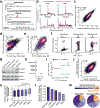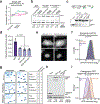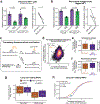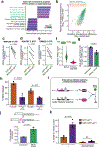Nuclear release of eIF1 restricts start-codon selection during mitosis
- PMID: 39443796
- PMCID: PMC11605796
- DOI: 10.1038/s41586-024-08088-3
Nuclear release of eIF1 restricts start-codon selection during mitosis
Abstract
Regulated start-codon selection has the potential to reshape the proteome through the differential production of upstream open reading frames, canonical proteins, and alternative translational isoforms1-3. However, conditions under which start codon selection is altered remain poorly defined. Here, using transcriptome-wide translation-initiation-site profiling4, we reveal a global increase in the stringency of start-codon selection during mammalian mitosis. Low-efficiency initiation sites are preferentially repressed in mitosis, resulting in pervasive changes in the translation of thousands of start sites and their corresponding protein products. This enhanced stringency of start-codon selection during mitosis results from increased association between the 40S ribosome and the key regulator of start-codon selection, eIF1. We find that increased eIF1-40S ribosome interaction during mitosis is mediated by the release of a nuclear pool of eIF1 upon nuclear envelope breakdown. Selectively depleting the nuclear pool of eIF1 eliminates the change to translational stringency during mitosis, resulting in altered synthesis of thousands of protein isoforms. In addition, preventing mitotic translational rewiring results in substantially increased cell death and decreased mitotic slippage in cells that experience a mitotic delay induced by anti-mitotic chemotherapies. Thus, cells globally control stringency of translation initiation, which has critical roles during the mammalian cell cycle in preserving mitotic cell physiology.
© 2024. The Author(s), under exclusive licence to Springer Nature Limited.
Conflict of interest statement
Figures















Update of
-
Nuclear release of eIF1 globally increases stringency of start-codon selection to preserve mitotic arrest physiology.bioRxiv [Preprint]. 2024 May 21:2024.04.06.588385. doi: 10.1101/2024.04.06.588385. bioRxiv. 2024. Update in: Nature. 2024 Nov;635(8038):490-498. doi: 10.1038/s41586-024-08088-3. PMID: 38617206 Free PMC article. Updated. Preprint.
References
MeSH terms
Substances
Grants and funding
LinkOut - more resources
Full Text Sources
Molecular Biology Databases

